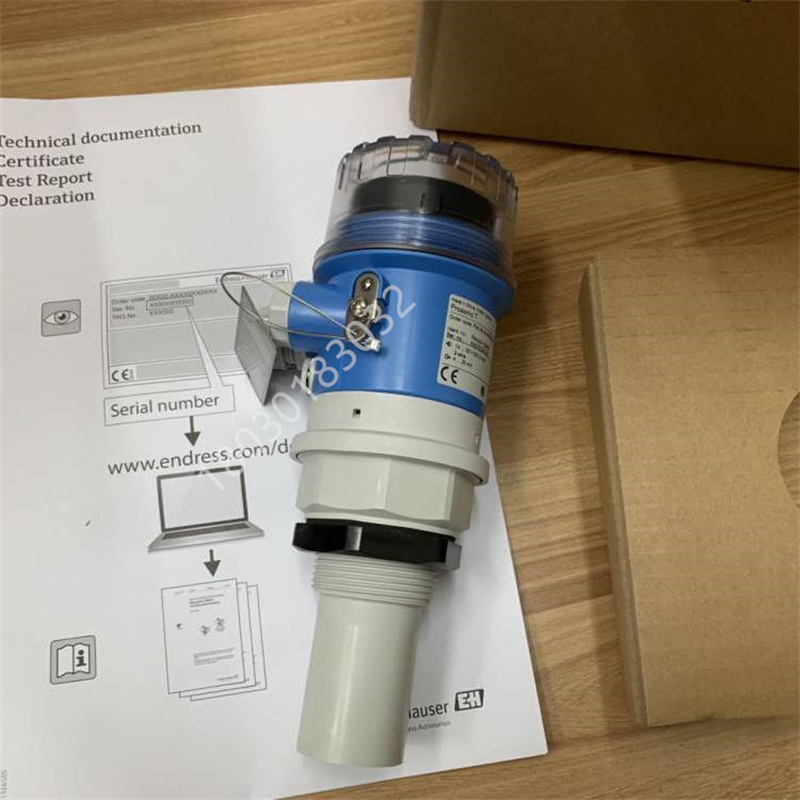


FMU30-10A1超声波液位计是Endress+Hauser(E+H)公司生产的一款高性能液位测量设备,适用于液体、浆料、淤泥和固体块料的连续性、非接触物位测量。
一、产品特点
非接触式测量:采用超声波技术,无需与介质直接接触,适用于腐蚀性、高温或高压环境。
高精度测量:分辨率可达量程的0.1%或4mm,测量精度为±0.3%。
宽测量范围:支持5米、8米、10米、15米、20米等多种量程选择,满足不同应用需求。
多种输出信号:支持4-20mA、HART、RS485 Modbus等信号输出,方便与DCS、PLC等系统集成。
防爆设计:防爆等级为Ex d ⅡC T6 Gb,适用于爆炸危险区域。
耐高温高压:工作温度范围为-60℃至+200℃,工作压力可达0.3MPa。
自诊断功能:具备现场包络线显示和按键操作,可快速进行故障诊断。
二、技术参数
电源:两线制DC24V/四线制DC24V/AC220V。
输出负载:0-500欧姆。
分辨率:量程的0.1%或4mm。
工作频率:41KHz。
介质温度:-40℃至+250℃。
过程温度:标准型-40℃至+130℃,高温型-40℃至+200℃。
外壳材质:铝单腔/铝双腔/塑料/不锈钢单腔。
连接方式:螺纹G1½或1½NPT以上均可安装。
显示与操作:四行纯文本显示,7种语言可选,菜单引导式现场操作。
三、应用领域
化工:反应釜、储罐、缓冲罐的液位监测。
环保:废水处理厂、污水处理池的液位控制。
食品/农产品:液体存储容器的液位测量。
能源:石油、天然气行业的储罐液位监测。
制药:卫生型液体存储容器的液位控制。
四、安装与维护
安装位置:选择无障碍物、与液位测量目标正对的位置,确保传感器水平对齐介质表面。
连接电缆:将连接电缆穿过预留的电缆穿孔,按照正确的接线顺序插入接线端子。
供电:将供电电缆按照正确的接线顺序插入供电接线端子。
调试:打开液位显示控制系统,检查液位计是否正常工作,根据使用说明书进行调试。
维护:定期清洁传感器表面,避免介质黏附影响测量精度。
五、常见故障及解决方案
无信号输出:检查电源连接,确保电压稳定;更换传感器;检查并修复信号线缆。
输出信号波动大:减少液体表面的波动,如增加挡板;清洁传感器表面;调整传感器与液体表面的距离。
测量误差大:重新调整传感器的安装角度;根据液体介质的特性重新设置声速;清洁传感器表面,去除气泡或固体颗粒。
显示屏乱码或不显示:更换显示屏;检查并修复内部电路。
The FMU30-10A ultrasonic level gauge is a high-performance level measurement device produced by Endress+Hauser (E+H) company, suitable for continuous, non-contact level measurement of liquids, slurries, sludge, and solid blocks.
CHARACTERISTICS
Non contact measurement: using ultrasonic technology, without direct contact with the medium, suitable for corrosive, high temperature or high pressure environments.
High precision measurement: The resolution can reach 0.1% or 4mm of the measuring range, and the measurement accuracy is ± 0.3%.
Wide measurement range: supports multiple range options such as 5 meters, 8 meters, 10 meters, 15 meters, 20 meters, etc., to meet different application needs.
Multiple output signals: Supports 4-20mA, HART, RS485 Modbus and other signal outputs, making it easy to integrate with DCS, PLC and other systems.
Explosion proof design: The explosion-proof rating is Ex d Ⅱ C T6 Gb, suitable for explosive hazardous areas.
High temperature and high pressure resistance: The working temperature range is -60 ℃ to+200 ℃, and the working pressure can reach 0.3MPa.
Self diagnostic function: With on-site envelope display and button operation, it can quickly diagnose faults.
2、 Technical parameters
Power supply: Two wire system DC24V/four wire system DC24V/AC220V.
Output load: 0-500 ohms.
Resolution: 0.1% of the measuring range or 4mm.
Operating frequency: 41KHz.
Medium temperature: -40 ℃ to+250 ℃.
Process temperature: Standard type -40 ℃ to+130 ℃, high temperature type -40 ℃ to+200 ℃.
Shell material: aluminum single cavity/aluminum double cavity/plastic/stainless steel single cavity.
Connection method: Installation can be done with threads G1 half or 1 half NPT or above.
Display and operation: Four line pure text display, 7 language options, menu guided on-site operation.
3、 Application Fields
Chemical industry: liquid level monitoring of reaction vessels, storage tanks, and buffer tanks.
Environmental protection: Level control of wastewater treatment plants and sewage treatment tanks.
Food/agricultural products: liquid level measurement of liquid storage containers.
Energy: Tank level monitoring in the oil and gas industry.
Pharmaceutical: Level control of sanitary liquid storage containers.
4、 Installation and maintenance
Installation position: select a position that is unobstructed and directly facing the liquid level measurement target, ensuring that the sensor is horizontally aligned with the surface of the medium.
Connecting cables: Thread the connecting cables through the reserved cable holes and insert them into the wiring terminals in the correct wiring sequence.
Power supply: insert the power supply cable into the power supply terminal in the correct wiring sequence.
Debugging: Open the liquid level display control system, check if the liquid level gauge is working properly, and debug according to the user manual.
Maintenance: Regularly clean the surface of the sensor to avoid medium adhesion affecting measurement accuracy.
5、 Common faults and solutions
No signal output: Check the power connection to ensure stable voltage; replace the sensor; Check and repair the signal cable.
Large output signal fluctuations: reduce surface fluctuations of the liquid, such as adding baffles; Clean the surface of the sensor; Adjust the distance between the sensor and the liquid surface.
Large measurement error: readjust the installation angle of the sensor; Reset the sound velocity based on the characteristics of the liquid medium; Clean the surface of the sensor to remove bubbles or solid particles.
Display screen garbled or not displaying: replace the display screen; Check and repair the internal circuit.


18030183032


